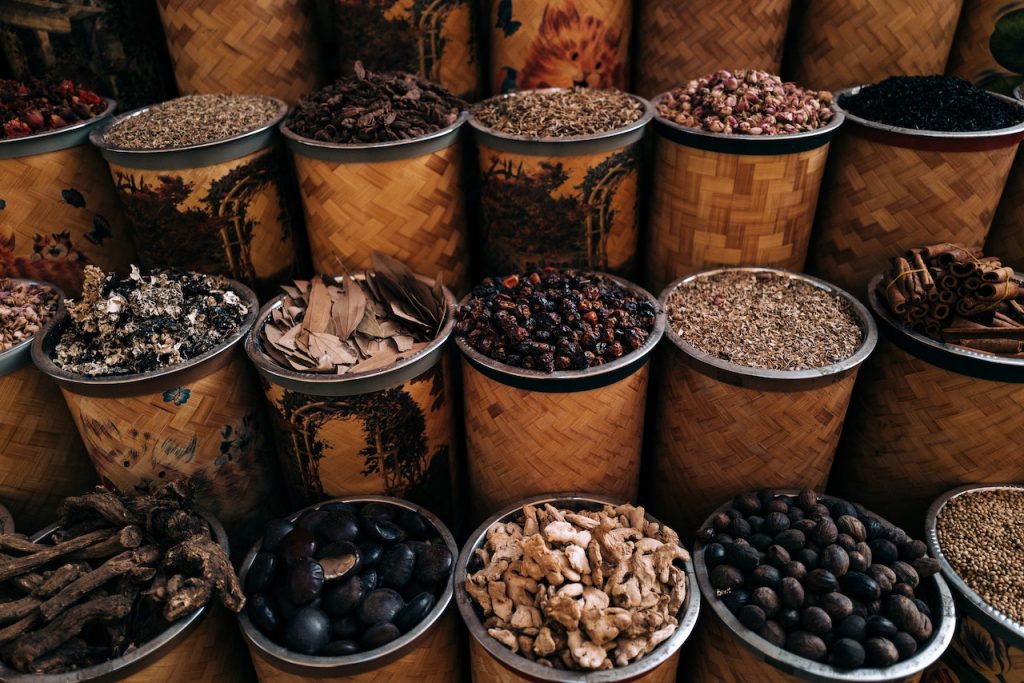
What are Herbal Bitters and why are they important?
Herbal Bitters are flavoring agents made with herbs and spices extracted into alcohol. People take bitters as a digestif to help digestion after a meal, as an aperitif to stimulate the appetite before a meal or at any time to promote gut health. It turns out the bitter taste is an important part of our diet.
Why is the bitter taste important?
The Bitter tasting herbs and foods help digestion and uptake of nutrients. In fact, a lack of bitters in the diet can lead to some common digestive complaints, such as gas, bloating, constipation, lack of appetite, nausea, even food intolerances.
There are bitter taste receptors in our mouth and the rest of our digestive tract. Here are some of the ways bitters enhance our health and digestion:
- The bitter taste on our tongue starts salivation. Saliva helps us digest carbohydrates. It also get the stomach ‘ready’ for the food we will eat. That’s why an aperitif, a before-dinner cocktail, is traditionally made with bitters.
- In our stomach, the bitter receptors help us release HCL, an enzyme that helps extract nutrients. Lack of HCL has been attributed to problems such as nutrient deficiency, ulcers, food intolerances, and heartburn.
- The liver and gall bladder are activated by the bitter taste to release bile which is crucial in the digestion of fats and oils.
- The bitter taste helps regulate blood sugar.
- The bitter taste supports peristalsis, the motion of the colon that creates proper bowel movements.
Bitters in the diet
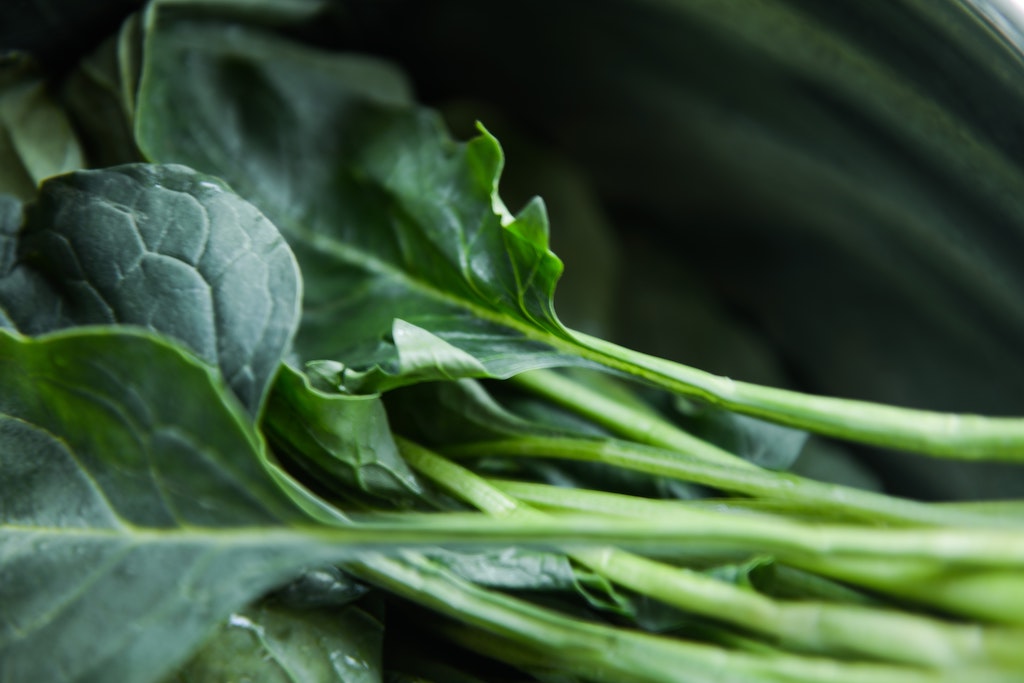
The bitter taste is also found in foods. Bitter foods include many greens, varieties of lettuce, Brussels sprouts, cabbage, kale and cocoa, to name a few. In particular, the practice of eating a raw salad before a meal is so we get bitter greens in our system to stimulate the appetite. The same is true for a before dinner cocktail containing bitters. Both stimulate the appetite.
Botanical Interests Seeds has a great selection of leafy greens and other foods good for the digestion. These grow well in the winter in areas with mild winters. Some will even take frost without damage.
I am an affiliate for Botanical Interest Seeds. I used to sell their fabulous seeds but now, I’m simply an affiliate. As an affiliate I make a little bit of money from each purchase at no cost to you.
These seeds are what I use for my own gardens and for herb plants that I sell. As a bonus, the seed packages have lovely watercolor drawings depicting the finished products. There is so much good information on each seed pack as well as on the inside of the package, too.
Bitter Herbs include, but are not limited to, chamomile, calendula, coriander, dandelion leaf and root, fennel, hibiscus and orange peel. Pungent herbs are often added to a bitters blend to moderate the bitter taste. Herbs such as rosemary, mint, cardamom, anise, fennel or licorice root are popular add-ins.
The Herb Cottage carries a small selection of dried herbs and sells mail order.
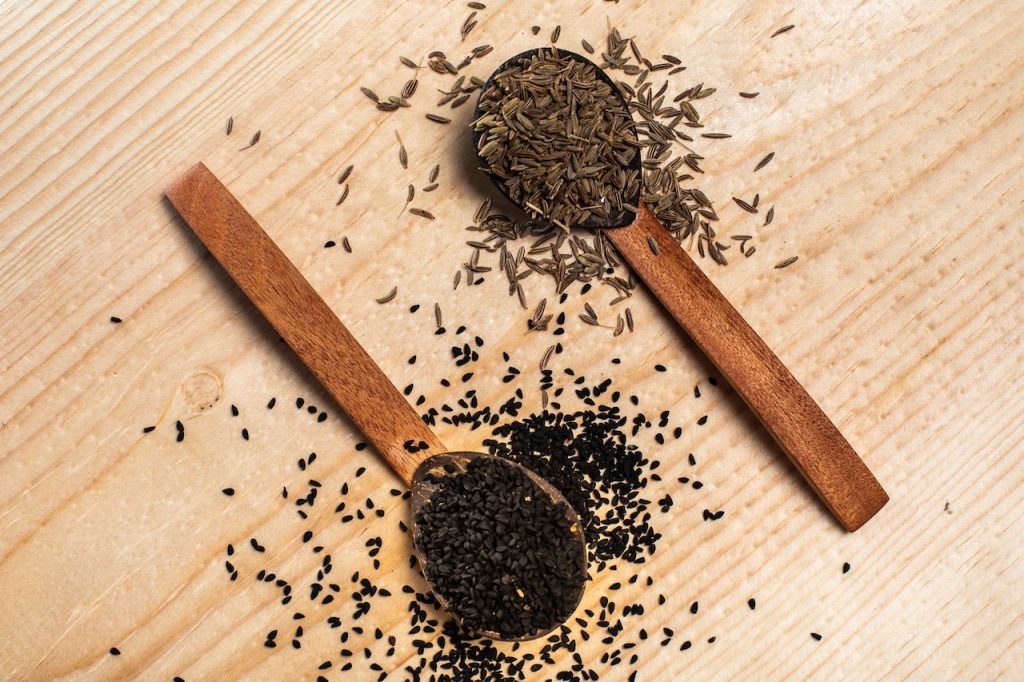
If The Herb Cottage doesn’t have what you’re looking for, try Starwest Botanicals. Starwest Botanicals has an excellent selection at good prices.

Bitter Taste
Given that the bitter flavor is difficult for some people to tolerate, many people suffer from a deficiency of bitters in their constitution. Because sweet and savory flavors are so popular, we barely use bitters any longer. This is to our detriment, as discussed above. Did you know salad dressing was introduced to make the taste of the bitter greens more palatable?
For Herbal Bitters, the blends are less bitter in taste by combining the bitter herbs with more pungent herbs, warm spices, honey or other natural sweeteners. This in no way diminishes the positive aspect of the bitter herbs, just makes them easier to swallow.
Bitters and alcohol
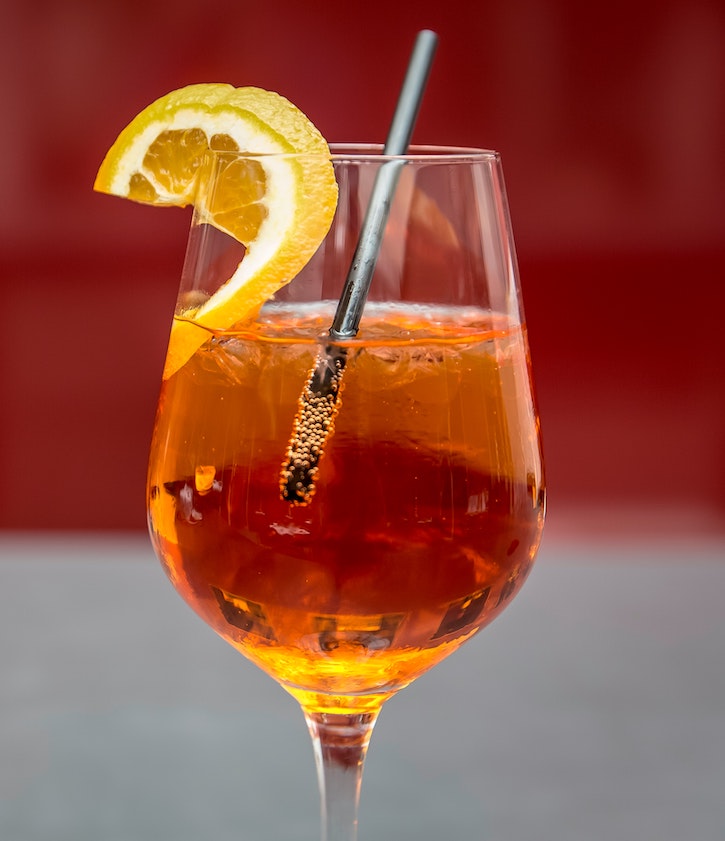
Mixed drinks, cocktails, often contain bitters. If a cocktail recipe calls for bitters, it will be a few drops in each drink. However, it is not necessary to mix Herbal Bitters with alcohol. Adding bitters to a glass of sparkling water, juice or even tea is another way to get bitters into the diet. In fact, some people simply take a 1/2 teaspoon or dropper full of bitters straight.
Non-alcoholic bitters
Extracting the herbs and spices into alcohol is just one way to make bitters. For non-alcoholic bitters, extract the herbs and spices into apple cider vinegar. Be sure to keep the extract refrigerated and use up within a year. Bitters made with alcohol do not need refrigeration.
Recipes
There are as many recipes for Herbal Bitters as there are people who make them.
Once you get the hang of making and using bitters, it’s fun to see what you can create. Recipes for bitters are really only suggestions. Use what is available to you, what you already have in the kitchen or what seems to your taste to be a nice combination. Just be sure to use some bitter herbs in the blend to attain maximum benefit from them.
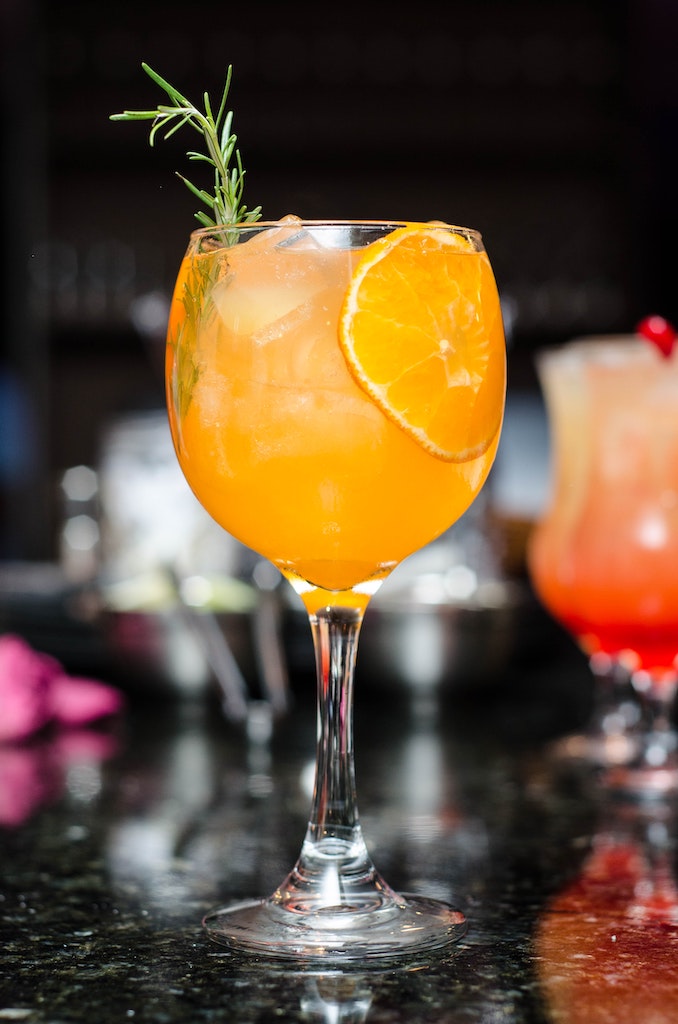
THE RECIPES
Note: as with any new herbal product, start by taking in small amounts. A dropperful or ½ teaspoon is enough to start.
Chai Spice Bitters
- 7g dried dandelion root pieces (un-roasted)
- 7g dried angelica root pieces (or more dandelion root if you don’t have access to any)
- 5g cinnamon chips (i.e. broken cinnamon stick pieces)
- 5g dried ginger root pieces (don’t use powdered ginger!)
- 5g whole green cardamom pods
- 5g dried orange peel
- 3g whole star anise
- 3g whole cloves
- 2g whole black peppercorns
- Plain vodka (at least 100-proof)
Weigh out all of your herbs and combine them in a clean pint-sized glass jar. To make intensely flavored cocktail bitters, cover the herbs with 1 cup of vodka. If you plan on using these as digestive support, fill the remaining space in the jar with the vodka (about 1 1/2 to 1 3/4 cups).
Cover your jar with a lid and park it in a spot away from direct sunlight. Allow the herbs to steep, gently shaking the contents every day, for 3-4 weeks for cocktail use, or, 4-6 weeks for dietary use. (I’ve let mine steep as long as 8 weeks with some batches!) Strain your bitters through a sieve or cheese cloth into a clean bottle. Label with the contents and date then use how you like! Bitters taste best when used within a year.
The best way to use these is with a dropper bottle or a bottle with a reducer cap (like you see on bottles of essential oils)
Recipe courtesy of https://www.sweetmiscellany.com/chai-spiced-digestive-bitters/
Chai Spiced Bitters mixes well with green or black tea. For a cocktail, try this:
CHAI SPICED BITTERS OLD FASHIONED
- 1 sugar cube or 1 tsp of sugar
- 2 dashes Chai Spiced Bitters OR Orange Mint Bitters- below
- ½ orange wheel slice
- 2 ounces bourbon or brandy
- Orange slice for garnish
PROCESS
- Add sugar to glass
- Add bitters and ½ orange wheel slice
- Muddle until the sugar is dissolved
- Fill glass half full with ice
- Add bourbon or brandy
- Stir until chilled
- Add orange slice garnish
- Enjoy
Orange Mint Bitters
INGREDIENTS
- 1 Orange, organic if possible, cut into pieces. Leave the peel on. The pith adds to the bitter aspect.
- 2 Tablespoons peppermint, spearmint or other mint of your choice
- 2 Teaspoons gentian root- this adds the bitter quality to the brew
- Vodka or Brandy
- Honey
PROCESS
- Place the herbs and orange in a clean quart jar, a canning jar works great here. If you don’t have a canning jar, that’s OK. Just use another glass jar with a lid.
- Fill the jar with the vodka or brandy. Stir well. Cover with a lid. Place out of direct sun, but where you’ll see it, so you remember to shake it every day or so.
- Let steep for 2 weeks. Taste. If it’s to your liking, it’s done. If you’d like it stronger, just leave it another week or so. When the taste is to your liking, strain through cheesecloth or coffee filter and discard the herbs and orange.
- Mix in honey to taste. I like about ¼ cup for this amount of bitters.
- Store in a dark bottle or dark location. Use within a year.
Try the Orange Mint Bitters in the Gimlet Recipe, below.
Lavender Bitters
- ½ cup fresh edible lavender (preferably organic) or 4 teaspoons dried edible lavender (preferably organic)
- Zest of 1 lemon
- ½ teaspoon orris root
- 1 cup high-proof vodka or grain alcohol
- ½ cup water
- 1 tablespoon honey
PROCESS
- In a clean, clear glass jar with a tight-fitting lid, combine the lavender, lemon zest, orris root, and vodka, and seal with the lid. Make sure that the agents are completely submerged in the liquid.
- Shake to combine and place in a well-trafficked area away from direct sunlight.
- For 2 weeks, agitate the jar daily.
- Place a snug-fitting funnel over another clean, clear glass jar. Line it with cheesecloth and strain the mixture, reserving the agents. Seal with the lid and place away from direct sunlight.
- Transfer the agents to a saucepan and cover with the water.
- Bring to a boil, then reduce to a simmer and cover with a lid; cook for 10 minutes.
- Remove from the heat, let cool to room temperature, transfer to another clean, clear glass jar, and seal with the lid.
- Shake to combine and place in a well-trafficked area away from direct sunlight.
- For 1 week, agitate the jar daily.
- Place a snug-fitting funnel over another clean, clear glass jar. Line it with cheesecloth and strain the liquid, discarding the agents.
- Add this liquid and the honey to the vodka solution. Shake to combine.
- Wait 3 days before using, or until any floaters come to the top.
- Place a snug-fitting funnel over another clean, clear glass jar. Line it with cheesecloth and strain the mixture, discarding any floaters.
- Transfer to a smaller, dark colored bottle for storage. If you choose to use a clear, decorative jar, store it in a dark place when not in use.
LAVENDER GIMLET
MAKES 1 DRINK
A gimlet is a simple cocktail. Traditionally it’s made with gin or vodka with a touch of lime cordial. Alex Valencia, mixologist at La Contenta in New York City, gives it an interesting spring twist with a good dose of lavender bitters. The distinctive floral element pairs nicely with gin.
PREP TIME: 10 MINUTES
- 2 ounces gin or vodka
- ¾ ounce freshly squeezed lime juice
- ¾ ounce Simple Syrup *simple syrup recipe below
- 3 dashes Lavender Bitters OR Orange Mint Bitters
- 1 strip lemon zest or 1 lavender sprig, for garnish
- Fill a shaker two-thirds full with ice, and fill a martini glass with ice water.
- In the shaker, combine the gin, lime juice, syrup, and bitters.
- Shake for 10 to 15 seconds, or until chilled.
- Discard the ice water, strain into the martini glass, and serve garnished with the lemon zest.
Excerpt From
Handcrafted Bitters: Simple Recipes for Artisanal Bitters and the Cocktails that Love Them
Will Budiaman
I hope this discussion on bitter encourages you to make some bitters of your own. Try them in sparking water, tea or make a festive holiday cocktail with them .
*Simple Syrup Recipe
Combine 1 part water and 1 part sugar in a saucepan over medium heat. Heat and stir until sugar is completely melted. Use 1 cup water, 1 cup sugar- or any like amounts such as ½ cup each, a few tablespoons each to make just a little. The 1 cup recipe makes about 1 ½ cut syrup.
Cool before use and store extra in refrigerator.

